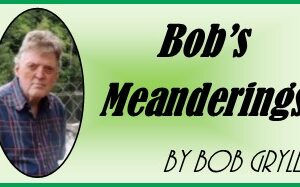Remember when men working in an office dressed in a shirt and a complementary tie? The 90s brought a practice of dress-down Fridays. Before long, every day was dress down and disappointingly no need for my beloved array of ties. None hung to my knees like those dreadful ones Trump wore. Proper length is to your belt buckle.
That left tieless shirts. The button-down collar one, originally a ‘polo collar’ was worn exclusively by polo players in the late 19th century. At first, the button was merely a remedy as polo players attached them to keep their collars out of their way.
I checked out a light-blue Oxford button-down 100% cotton shirt once but was dejected by the $200 price. Later, on a shopping spree in Watertown, I found a suitable knock-off at a bargain of $30. When I tried it on at home, the shirt fitted like an over-blown balloon. No panic. I took it to an exceptionally talented seamstress. It now fits like a glove. It is kept handy for a top-notch business meeting – if I’m ever invited.
The influence of the white dress shirt can be best traced back to the Victorian era as an important symbol of wealth and rank. For me, a white shirt is only for funerals.
Buttons spaced on the front of a shirt are known as ‘stance’. Frustration with poor button stance is so universal, even Jerry Seinfeld talked about it with George. “The second button is the key that literally makes or breaks the shirt. If that second button is set too high, a shirt appears awkward when buttoned. Undoing the second button can drop the shirt opening too low.”
My favourite casual shirt is one I bought at Winners back in the 80s. It is a medium blue colour with lighter blue vertical stripes. I can’t wear it because I burned a hole on one side while leaning over a stove. I’ve been after Sheila to patch it. She did with a thick logo patch we got when touring the Kingston Pen. Now when I wear it, it looks cool.
As a rule of thumb, shirts should be made of 100% natural fibers like cotton, linen, wool, or a blend of these. Pure cotton is my choice.
When approaching a guy, I notice his shirt first, then his face. There are some excellent shirt wearers around the area; Beachburg Road, Lacroix Bay and the Nangor vicinity, etc.
However there is a man about town who has me puzzled. A few years ago I met him and his wife at a social function. He had on a shirt that I was instantly attracted to. It was a birthday gift from his wife. I asked so many questions, he had a hard time escaping. So appealing was that shirt I was compelled to keep an eye on it the rest of the evening. Yesterday I finally asked him why I hadn’t seen it since. He had no recall of what I was referring too. I said, “How could you forget about it?” He said, “If it’s so vital, I’ll show you my wardrobe. If you find it there you can have it.” That sounded like a generous offer!
Most men keep things simple by choosing solid colors while shunning patterns. It’s not a bad strategy. It’s less risky than mixing and matching patterns. Patterns though, can add variety and visual interest to an otherwise ho-hum shirt.
Stripes on a shirt are a series of parallel lines. The continuous flow of the pinstripe pattern draws the eye up and down, which elongates silhouettes, helping make a shorter man appear taller and a larger man slimmer. Striped patterns are more formal than combinations of colours, given their association with 1920s gangsters and 1980s Wall Street sharks, though not impossible to pull off.
A checkered or plaid pattern consist of stripes crossing horizontally and vertically forming bands of multiple colours creating squares. It is the most fashionable – my preferred shirt style. Windowpane dress shirts have a pattern with the squares being widely spaced.
Unfortunately, the pandemic has erased social gatherings leaving my collection of shirts mostly lifeless. However on an odd trip to the pharmacy or for groceries, I always dress in a favourite shirt.





![Kenopic/Smith Auction [Paid Ad]](https://whitewaternews.ca/wp-content/uploads/2018/10/advertising-100x75.jpeg)

